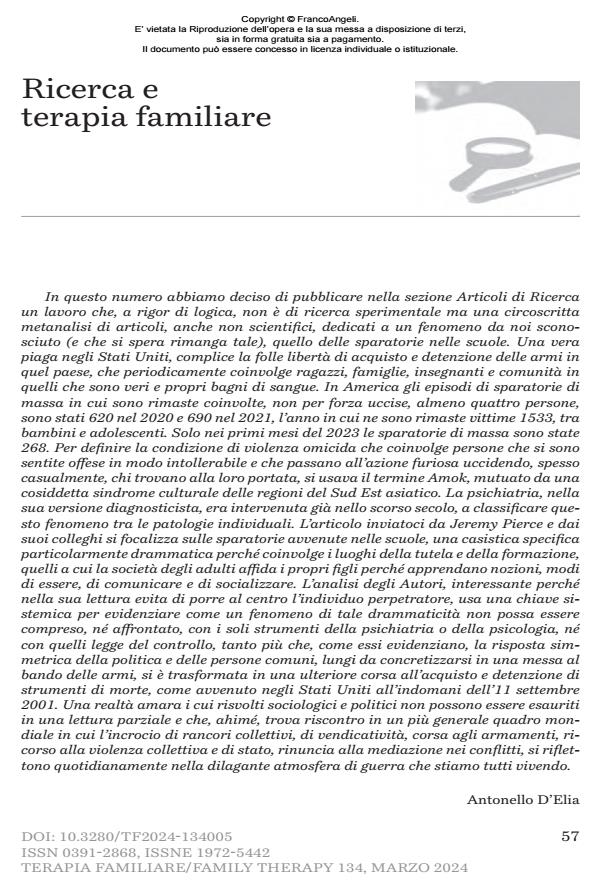Le sparatorie nelle scuole negli Stati Uniti. Considerazioni sistemiche
Titolo Rivista TERAPIA FAMILIARE
Autori/Curatori Jeremy Pierce, Zachary Trevino, Kate Wagner, Monica Osterbauer
Anno di pubblicazione 2024 Fascicolo 2024/134
Lingua Italiano Numero pagine 18 P. 57-74 Dimensione file 740 KB
DOI 10.3280/TF2024-134005
Il DOI è il codice a barre della proprietà intellettuale: per saperne di più
clicca qui
Qui sotto puoi vedere in anteprima la prima pagina di questo articolo.
Se questo articolo ti interessa, lo puoi acquistare (e scaricare in formato pdf) seguendo le facili indicazioni per acquistare il download credit. Acquista Download Credits per scaricare questo Articolo in formato PDF

FrancoAngeli è membro della Publishers International Linking Association, Inc (PILA)associazione indipendente e non profit per facilitare (attraverso i servizi tecnologici implementati da CrossRef.org) l’accesso degli studiosi ai contenuti digitali nelle pubblicazioni professionali e scientifiche
Gli autori cercano di fornire una comprensione sistemica ed ecologica del fenomeno delle sparatorie nelle scuole negli Stati Uniti. Viene presentata una panoramica degli impatti sistemici conseguenti a questi eventi insieme a una breve applicazione delle teorie generali dei sistemi ed ecologiche, culminando in un appello all’azione per tutti i terapisti sistemici affinché collaborino nel rispondere a queste tragedie.
Parole chiave:sparatorie nelle scuole, teoria generale dei sistemi, cibernetica, teoria ecologica, mass media, impatti bio-psico-sociali.
Jeremy Pierce, Zachary Trevino, Kate Wagner, Monica Osterbauer, Le sparatorie nelle scuole negli Stati Uniti. Considerazioni sistemiche in "TERAPIA FAMILIARE" 134/2024, pp 57-74, DOI: 10.3280/TF2024-134005